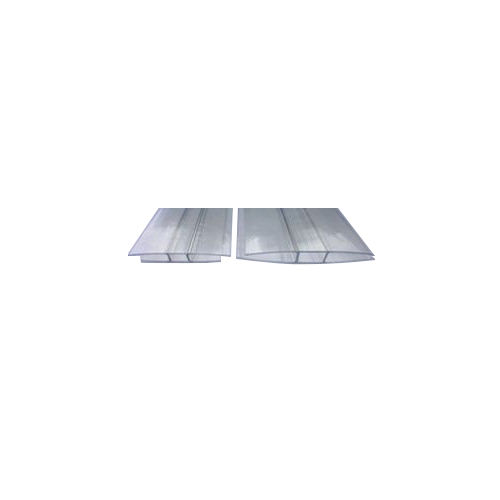Polycarbonate H Profile Sheet
Product Details:
- Material Polycarbonate
- Type Polycarbonate Sheet
- Size Standard
- Shape Rectangular
- Pattern Plain
- Click to View more
X
Polycarbonate H Profile Sheet Price And Quantity
- 100 Square Foot
Polycarbonate H Profile Sheet Product Specifications
- Rectangular
- Polycarbonate Sheet
- Plain
- Polycarbonate
- Standard
Polycarbonate H Profile Sheet Trade Information
- Cash in Advance (CID)
- 5000 Square Foot Per Month
- 10 Days
- All India
Product Description
Polycarbonate H Profile Sheet is a high-quality roofing and cladding material made from polycarbonate, a durable and lightweight material known for its excellent impact resistance and weatherability. This type of polycarbonate sheet has an H-shaped profile, which allows for easy installation and improved structural support. These sheets are available in standard sizes and come in a plain pattern with a rectangular shape. They are ideal for use in a wide range of applications, including commercial and industrial buildings, greenhouses, skylights, and more. The polycarbonate material used in these sheets is also known for its excellent UV resistance, which helps to prevent yellowing and degradation over time. Plus, it is easy to clean and maintain, making it a practical and cost-effective choice for any project. Whether you are looking for a roofing solution that is lightweight, durable, and easy to install, or a cladding material that offers superior strength and weather resistance, Polycarbonate H Profile Sheet is the perfect choice for your needs.
FAQs of Polycarbonate H Profile Sheet:
Q: What is Polycarbonate H Profile Sheet made of?
A: Polycarbonate H Profile Sheet is made from polycarbonate, a durable and lightweight material known for its excellent impact resistance and weatherability.Q: What are the standard sizes for Polycarbonate H Profile Sheet?
A: Polycarbonate H Profile Sheet is available in standard sizes.Q: What applications is Polycarbonate H Profile Sheet suitable for?
A: Polycarbonate H Profile Sheet is ideal for use in a wide range of applications, including commercial and industrial buildings, greenhouses, skylights, and more.Q: What are the benefits of using Polycarbonate H Profile Sheet?
A: Polycarbonate H Profile Sheet is lightweight, durable, easy to install, and offers excellent weather resistance and UV protection.Q: How do I clean and maintain Polycarbonate H Profile Sheet?
A: Polycarbonate H Profile Sheet is easy to clean and maintain. Simply use a mild detergent and warm water to clean the surface, and avoid using abrasive cleaners or tools that could scratch the material.Tell us about your requirement

Price:
Quantity
Select Unit
- 50
- 100
- 200
- 250
- 500
- 1000+
Additional detail
Mobile number
Email





 Send Inquiry
Send Inquiry Send SMS
Send SMS Call Me Free
Call Me Free